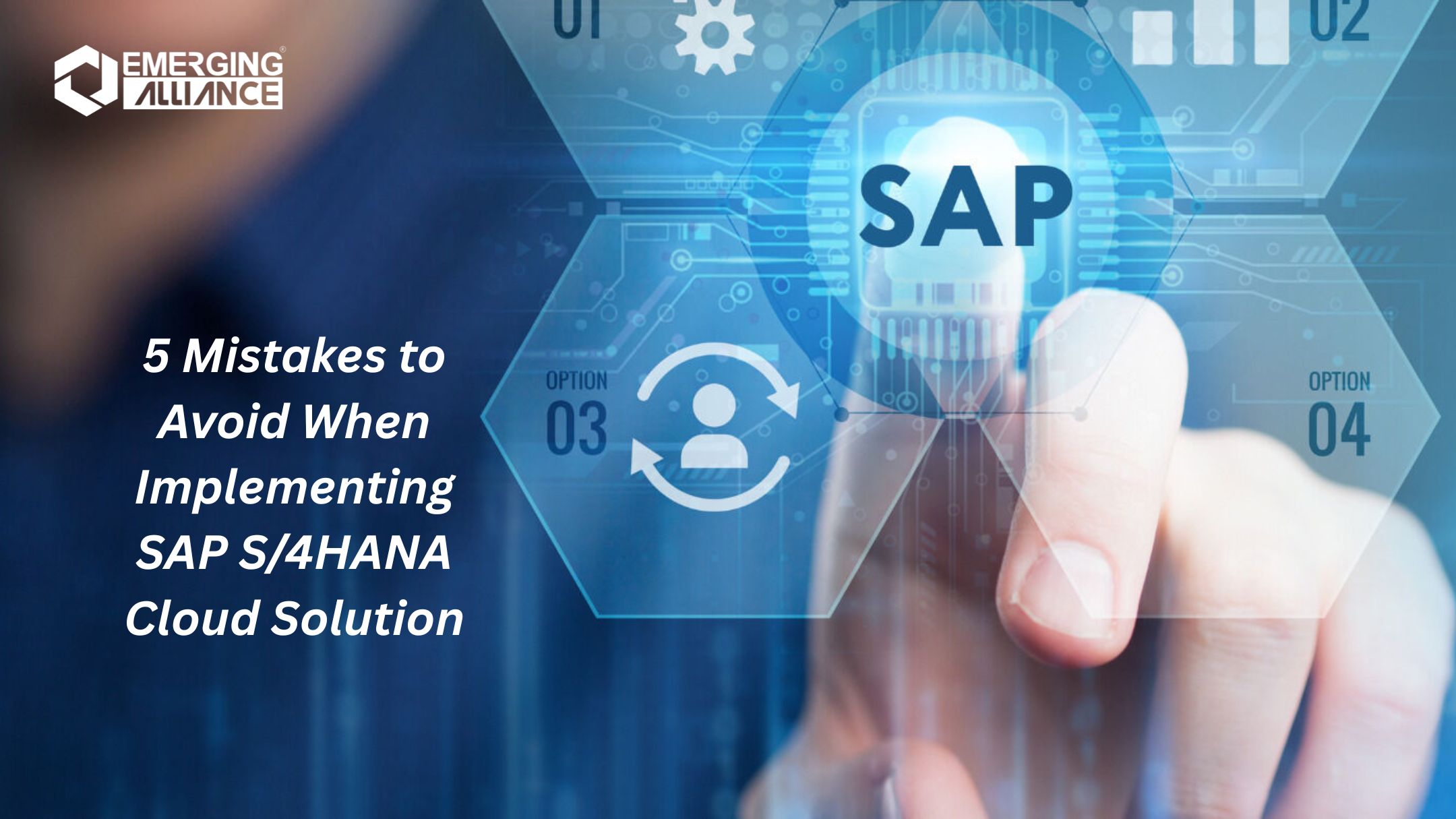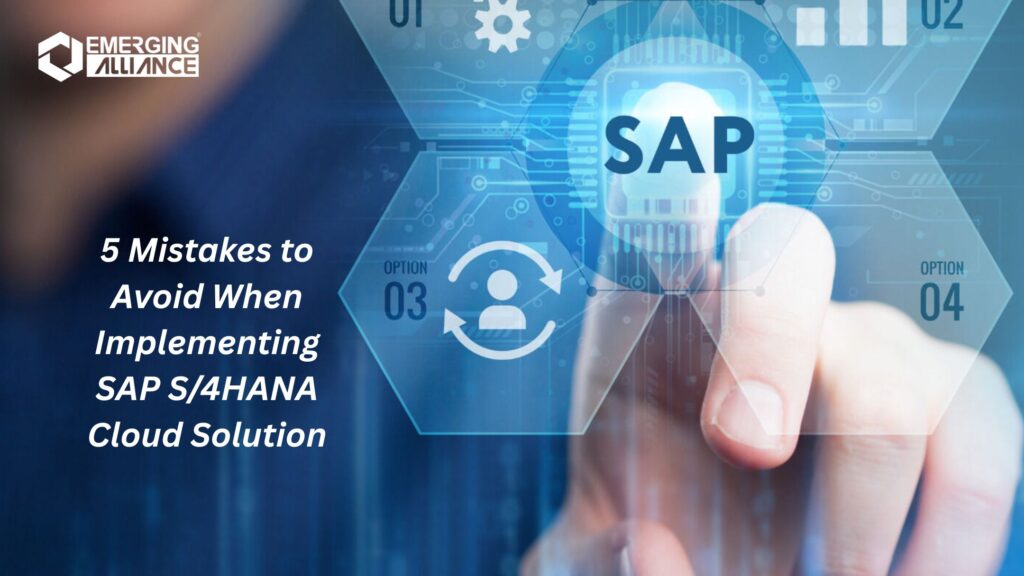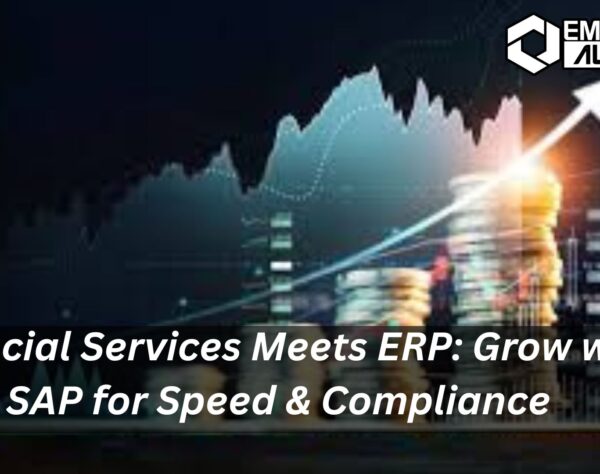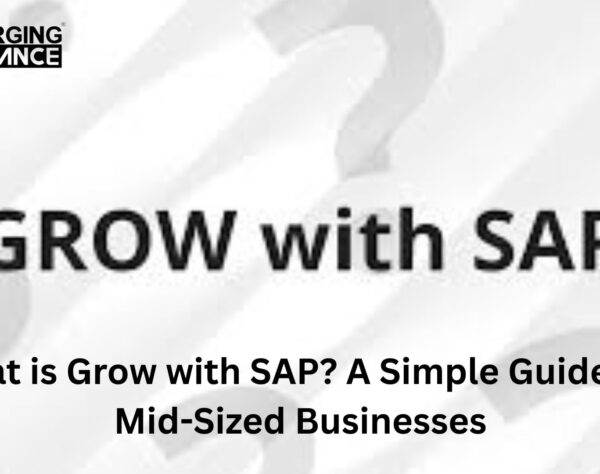
5 Mistakes to Avoid When Implementing SAP S/4HANA Cloud Solution

Grow with SAP the Right Way: S/4HANA Cloud Mistakes to Avoid
Implementing SAP S/4HANA Cloud is a significant step for companies aiming to modernize their operations and gain a competitive edge. As a next-generation ERP software solution, SAP S/4HANA Cloud supports business transformation by enabling real-time analytics, streamlined processes, and improved agility. However, to truly Grow with SAP, organizations must navigate the implementation process strategically.
Below are the top 5 common mistakes to avoid when implementing SAP S/4HANA Cloud, ensuring a smoother transition and maximum return on investment.
1. Underestimating Change Management
Many organizations focus heavily on the technical aspects of SAP S/4HANA Cloud implementation and overlook the human factor. Change management is critical to ensure user adoption and long-term success.
Avoid this mistake by:
- Involving end-users early in the process
- Providing robust training and support
- Communicating the value of change consistently
Why it matters for growth: Smooth adoption helps employees embrace the new ERP software, accelerating your ability to Grow with SAP.
2. Poor Data Migration Strategy
Data quality issues are a common pain point during ERP migrations. Transferring outdated, inconsistent, or redundant data into SAP S/4HANA Cloud can lead to costly complications and operational delays.
Avoid this mistake by:
- Cleaning and validating data before migration
- Establishing clear data governance policies
- Testing thoroughly before go-live
Pro tip: SAP offers tools within the SAP S/4HANA Cloud suite to support efficient data migration—use them wisely.
3. Choosing the Wrong Implementation Partner
Not all partners are created equal. A partner without deep SAP expertise or industry-specific knowledge can cause delays, scope creep, and suboptimal configurations.
Avoid this mistake by:
- Vetting potential partners for SAP certifications and project experience
- Asking for references from similar industries
- Ensuring alignment on business goals and KPIs
Remember: The right partner can help you maximize the potential of your ERP software and make the most of Grow with SAP initiatives.
4. Ignoring Business Process Redesign
One of the key advantages of SAP S/4HANA Cloud is the opportunity to reimagine and optimize your core business processes. Simply replicating old processes in a new system limits the software’s value.
Avoid this mistake by:
- Reviewing and reengineering workflows before implementation
- Leveraging best practices embedded in SAP S/4HANA Cloud
- Engaging cross-functional teams to identify bottlenecks and inefficiencies
Benefit: Unlock more from your investment and support your journey to Grow with SAP.
5. Lack of a Post-Go-Live Support Plan
Many companies celebrate a successful go-live only to face operational issues due to inadequate post-launch support. Without continuous monitoring, optimization, and updates, your ERP system can quickly become underutilized.
Avoid this mistake by:
- Setting up a support and optimization roadmap
- Monitoring key metrics and user feedback
- Planning for regular system updates and innovations
Pro insight: SAP S/4HANA Cloud is built for continuous improvement—use this to your advantage.
FAQ: SAP S/4HANA Cloud Implementation
1. What is SAP S/4HANA Cloud and how does it differ from traditional ERP software?
SAP S/4HANA Cloud is a modern, cloud-based ERP software solution from SAP that enables real-time business operations, advanced analytics, and intelligent automation. Unlike traditional ERP systems, it offers scalability, lower maintenance, and faster innovation cycles, making it ideal for companies looking to Grow with SAP.
2. Why is change management so important in an SAP S/4HANA Cloud implementation?
Change management ensures that employees are prepared and motivated to adopt the new ERP software. Without it, user resistance can hinder productivity and ROI. Effective change management accelerates adoption and supports the overall goal to Grow with SAP.
3. How can poor data migration affect my SAP S/4HANA Cloud project?
Inaccurate or inconsistent data can disrupt operations, delay go-live, and compromise reporting and compliance. A well-planned data migration strategy ensures the integrity of your SAP S/4HANA Cloud system and supports smooth business continuity.
4. What are the risks of not redesigning business processes during implementation?
If you replicate outdated processes in SAP S/4HANA Cloud, you miss out on opportunities to optimize efficiency and agility. The platform offers embedded best practices that can transform operations—essential for companies aiming to Grow with SAP.
5. What kind of post-go-live support is needed for SAP S/4HANA Cloud?
After go-live, organizations should have a clear support plan, including user training, performance monitoring, and system updates. Continuous optimization helps you fully leverage your investment in SAP S/4HANA Cloud ERP software and drive sustainable growth.
Final Thoughts
Implementing SAP S/4HANA Cloud is a powerful step toward digital transformation. By avoiding these five common mistakes, your organization can ensure a smoother journey and unlock the full potential of modern ERP software. Whether you’re a fast-scaling startup or an established enterprise, following SAP’s best practices will help you truly Grow with SAP.
Embrace agility, drive efficiency, and future-proof your business with GROW With SAP.







